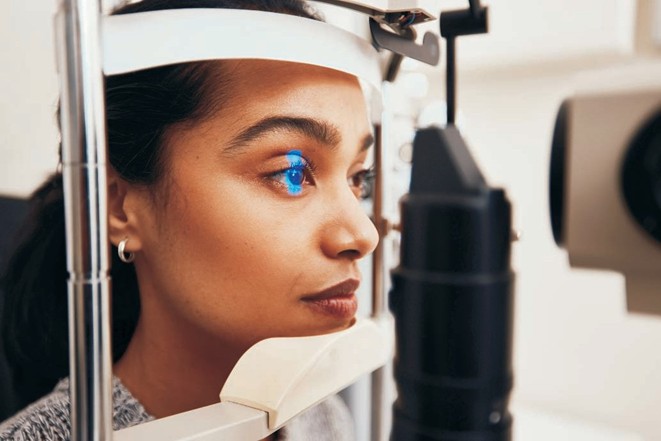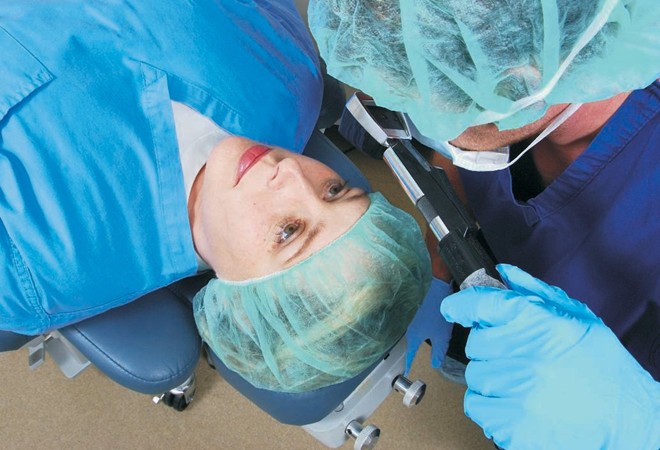Diabetes Health editorial team shares how to protect your eyes from infections
It is known that the eye is a window to health. Many eye diseases are detected by eye examinations. Diabetes related eye diseases are among the most important complications of Diabetes. Untreated, they may cause blindness. Diabetic retinopathy is the most typical Diabetes-related eye problems. The retina is a screen situated behind the eye ball, where images of the world are projected – and we see these images as processed by our brain. Damage to the retina occurs in Diabetes – both because of fat droplets attaching to them, as well as by thinning of vessels and bleeding that occurs in the retina.
Early signs of damage to the retina may be picked up by a focused examination by a trained ophthalmologist. In addition to retinal disease, people with Diabetes may also have cataract, glaucoma as well as blockage of blood vessels that
supply blood to the eye. These problems are easily diagnosed and treated. Dangerous, vision- threatening forms of retinopathy can be halted in its tracks by a simple laser procedure. In addition, cataract surgery after good glucose control can achieve excellent results.
Regular eye check-up is one of the holy commandments for people with Diabetes. However, the eye check-up in most cases hardly goes beyond reading a chart on the wall. Unchecked Diabetes could lead to diabetic retinopathy which may lead to blindness. Hence it is necessary to also examine the retina from time to time by dilating the pupils.
People with Diabetes are also at a higher risk for cataract and they tend to get it at an earlier age than non-diabetics. Regular check-ups and early detection are the best defence against these and any other eye complications from Diabetes.
Watch out for symptoms like blurry vision, double vision, straight lines like telephone poles looking bent, spots and lines floating in front of your eyes, narrower field of vision, difficulty seeing clearly in dim light, feeling of pressure or pain in eyes and trouble perceiving or distinguishing colours, especially blue and yellow.
Tips and guidelines to protect your vision:
Keep your HbA1c (a 3-month measure of blood glucose control) in your target range.
- Do your best to control your blood glucose daily. Avoid extreme and frequent blood glucose highs and lows (even if your A1C is on target if you have Diabetes).
- Eat a healthy
- Wearing sunglasses to reduce UV light exposure
- Taking a multivitamin that contains vitamins A, C and E, beta-carotene and zinc. (Consult your doctor before taking supplements for eye health.)
- Undergo annual eye check-up
- Increase intake of b-carotene rich foods like orange, pumpkin, carrot, broccoli, dark leafy vegetables, jackfruit for people who do not have Diabetes
Eye testing
Eye testing is not just vision testing as it encompasses three faculties – visual acuity (measuring central vision), colour vision and peripheral vision or visual fields.
Visual acuity
Visual acuity is a measure of the sharpness of our central vision. 20/20 or 6/6 vision is a term used to express normal visual acuity measured at a distance of 20 feet. If you have 20/20 vision, you can see clearly at 20 feet or 6 m what should normally be seen at that distance. Any disease affecting the central vision is easily detected during an eye check-up or by the person himself.
Colour vision
Colour differentiation is something most of us take for granted. Colour vision abnormalities are common. They are usually inherited but may be acquired through diseases. Colour blind people, unlike popular belief, do not see everything in black and white but see it as de-saturated colour. Colours which are seen by normal people appear to be of a different hue. Eye check- ups are a useful tool to detect colour blindness as certain diseases can affect colour vision.
Peripheral vision or visual fields
Eyes have internal pressure like blood pressure in our body. This pressure within the eye is called intraocular pressure. If this pressure increases, the connecting nerve of the eye to the brain (called the optic nerve) gets gradually damaged. One condition is called glaucoma. In spite of an individual having glaucoma, their vision testing can remain 6/6 or 20/20 even in advanced stages of glaucoma. Glaucoma or high eye pressure needs an evaluation of eye pressure, the angle of the eye, a look at the optic nerve structure and evaluation of its function by means of visual fields. Vision loss occurs more on the peripheral or surrounding field vision. The damage is not sudden and often no symptoms are seen and can remain undetected for years.
Visuals symptoms occur in the later stage of the disease. Early and appropriate visual field testing will help detect loss of peripheral field. Timely medical interventions can prevent further irreversible loss to peripheral vision.
General misconceptions surrounding eye check-ups are that it only checks your vision or a change in prescription for your prescription glasses. But eye check-up for people with Diabetes should focus on the retina. The retina, through which we perceive the external world, is classically affected by Diabetes, hypertension and age related macular degeneration.

Retina exam
Fundoscopy allows a doctor to see the retina and other structures. Retinal fundoscopy may detect some signs of other eye diseases like retinal changes due to high blood pressure, cataract as well as glaucoma. Retinal photography screening monitors your eye health though accurate photographic documentation which remains available for future reference.
Normal results show normal retina, blood vessels and the optic disc appear normal. Abnormal findings include:
- Diabetic retinopathy (damage to the retina due to high sugars) – classified as mild, moderate, severe or proliferative).
- Vascular occlusions (blockage of blood vessel, usually by a clot) This occurs during high blood pressure chronic blood
- Infection and inflammation on retina orvitreous (clear gel that fills the space between the lens and the retina).
- Evidence of
- Retinal tear or
- Macular degeneration (loss of vision in the centre of the visual field). This is a disease that affects central vision with age due to degenerative
- Features of glaucoma (increased pressure) in the optic nerve.
Systemic diseases and your eye
Systemic diseases like Diabetes, hypertension , thyroid, rheumatoid arthritis affect the eye. Eye disease caused by Diabetes is known to affect the retina. The light-sensitive retina is located at the back of the eye. Its centre is called the macula. It helps us to see 20/20 or 6/6 and provides the best colour vision. Systemic diseases like Diabetes, high blood pressure, tuberculosis and viral diseases can affect the macula and its entire surrounding area. Therefore, it is necessary to undergo a complete eye check-up to assess the health of the back portion of the eye. This check- up, performed by dilating the eye using eye drops, helps rule out degenerative effects of eye diseases. Regular eye screening and timely treatment can largely avert permanent eye damage.
Eye check-ups are crucial as many other systemic diseases also affect the eye. High blood pressure can obliterate circulation in branches of retinal blood vessels and cause a spectrum of diseases known as retinal vessel occlusion and damage certain areas of the retina. Diseases like thyroid and rheumatoid arthritis can cause dry eyes and other problems in the eye. Treatment of certain diseases like rheumatoid arthritis, tuberculosis can impact vision. Hencemonitoring of vision, colour vision and peripheral vision is necessary along with a doctor determining whether to continue therapy. Diseases of the brain like stroke or tumours affecting connecting nerves of the eye to the brain or their pathway can also affect central or field vision.
Squint and our eyes
Both our eyes require synchronous alignment and function to be able to form a single image from two different images perceived by the two eyes. Any misalignment of the two eyes leads to squint or strabismus (crossed eyes). Any disruption to alignment, tumours can cause loss of 3-D image perception.
Computer vision syndrome
Last three decades have seen an alarming growth of technology and gadgets. This has led to newer diseases like computer vision syndrome, dry eyes etc. which need to be tackled appropriately.
- Only getting a pair of glasses from the optician does not An annual eye check is a must.
Eye check-ups, by a qualified ophthalmologist, is necessary as it involves a comprehensive examination of not only vision but colour vision, the simultaneous perception of peripheral vision or field of vision, intraocularpressure, alignment of the two eyes and their ability for 3D imaging.
- Contrary to popular belief only prescription glasses require a blue filter. Non-prescription glasses do not always require a blue filter.
Cataract
Cataract is a clouding of the lens in the eye which leads to a decrease in vision.
Cataract is the foremost cause of preventable blindness. Cataracts are one of the earliest complications of Diabetes and one of the most common causes of visual impairments in people with Diabetes.
Symptoms include:
- Clouded, blurred or dim vision
- Increasing difficulty with vision at night
- Sensitivity to light and glare
- Need for brighter light for reading and other activities
- Seeing “halos” around lights
- Frequent changes in eyeglass or contact lens prescription
- Fading or yellowing of colours
- Double vision in a single eye
- Need for frequent change in prescription glasses
Another reason is that Diabetes can cause infections, especially feet and hands, by reducing the blood and nerve supply. This reduces the ability of the body to mount an immune response.
People with Diabetes are more likely to get bacterial infections, including bacterial conjunctivitis and eyelid swelling called stye. This looks like a boil or a pimple over the lid margin.

-
Conjunctivitis
Conjunctivitis or pink eye is an inflammation of the outer white portion of the eye. One or both eyes may be affected. Typically, the infection starts in one eye and spreads to the other eye in two to five days. The aetiology often depends on geography and age, but the most common include Staphylococcus and Streptococcus or viral adenovirus infection. They are more prone to conjunctivitis, lid infection, stye or meibomian gland dysfunction.
Complications can range from mild corneal irritation to severe visual loss, which develops in cases caused by extremely pathogenic bacteria. Symptoms of conjunctivitis include:
- redness of the eye
- discharge containing mucus and pus
- pain and irritation
- eye lid swelling
- painful lymph node enlargement near the ear
There may be matting of eye lashes and the eyes could be stuck shut in the morning making it difficult to open the eyes. The
discharge in bacterial conjunctivitis is usually thick, containing mucus and pus and yellowish in colour. The irritation may be severe such that patients may feel that there is some foreign body inside the eye.
Treating conjunctivitis
Diagnosis of bacterial conjunctivitis is mainly done by clinical examination
However, the bacteria can be identified by microbiological examination such as special stain under the microscope and culture of bacteria. The mainstay of treatment is antibiotic eye drops or ointments. Oral antibiotics are usually not required in eye infections. Artificial tears give substantial relief from irritation and pain. Contact lenses should be avoided in cases of conjunctivitis.
Stye
A stye or hordeolum is a small, painful lump on the inside or outside of the eyelid. It is actually a collection of meibomian secretion near the hair follicle, the sebaceous gland of Zeiss, caused by bacteria. Most styes are short-lived and self- limiting, but can cause pain. Another form of lid swelling called chalazion is not painful. Styes are characterised by an acute onset and usually short in duration (< 21 days without treatment) compared to chalazion which is a chronic stye and needs surgical intervention.
Treating a stye
Don’t try to burst the stye yourself as this can result in a serious infection. Most styes get better and disappear within one to three weeks. As a part of self-care at home, apply a warm compress over the affected eye for five to 10 minutes can be repeated 3 to 4 times a day. If the pain is discomforting, a paracetamol tablet may provide pain relief.
For recurring styes, you probably need to check your blood glucose and cholesterol levels. People with high blood glucose can get recurrent infectious swelling of the lid. It is best to consult your eye doctor if you are
repeatedly getting styes. It is important that you avoid use of cosmetics, dirty towels or contaminated hands. You must wash your hands if you have touched your infected eye. People who have an eye stye should avoid eye makeup (e.g., eyeliner), lotions and wearing contact lenses as these can aggravate and spread the infection (sometimes to the cornea).
Endophthalmitis
A rare but serious complication seen in people with Diabetes is infection inside the eye called endophthalmitis.
Endophthalmitis causes serious vision loss, severe pain and swelling of the eye. This infection is very difficult to treat as it occurs due to other infections in the body (kidneys or lungs) which are transmitted via the blood to the eye (Endogenous organism or
from outside exogenous organism). It occurs when:
- People have very high blood glucose usually above 400 mg/dL. Therefore, good adequate sugar control is important before surgery.
- Bacteria or fungi can cause endophthalmitis when the immunity is compromised.
- A person with high blood glucose levels undergoes cataract surgery.
Though endophthalmitis is an uncommon occurrence seen in about one among 1,00,000 cases, it is best to postpone elective surgeries until the blood glucose levels are under control. People with Diabetes who undergo any eye surgery must monitor their blood glucose levels carefully. Infection is usually more common during the first two weeks following an internal eye procedure such as a cataract operation. In the rare event that you have such symptoms following surgery, you should seek immediate medical attention.
Care should be taken not to touch the eyes with unclean hands and to avoid water going into the eyes (such as while bathing or swimming) for 2 weeks after surgery.
Treating endophthalmitis
Treatment of such infections includes surgery called vitrectomy, antibiotic injection inside the eye and urgent treatment with intravenous antibiotics and strict control of blood glucose with insulin. The treatment lasts for many weeks.
However, even with aggressive treatment, significant irreversible vision loss may occur. The prognosis depends on the type of infection, early detection as well as prompt and appropriate treatment.
To conclude
People with controlled Diabetes do better than those with uncontrolled Diabetes.
However, even a person whose Diabetes is under perfect control can still develop eye infections. Even if medicines are taken regularly and diet is controlled, it is not necessary that there will be no eye complications. It is important to aim for an HbA1c level within your specific target range.
Physical exercise is an important component of keeping blood glucose under control. Practise good hygiene such as washing your hands frequently and avoiding touching or rubbing your eyes can help.
Annual eye check-up is essential for all people with Diabetes to avoid infections and other complications associated with Diabetes. All people with blood pressure, cholesterol, rheumatoid arthritis, thyroid disorders, and tuberculosis need annual eye examinations and followup.














